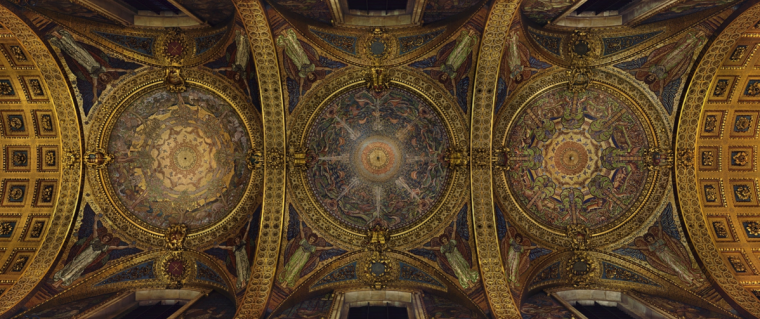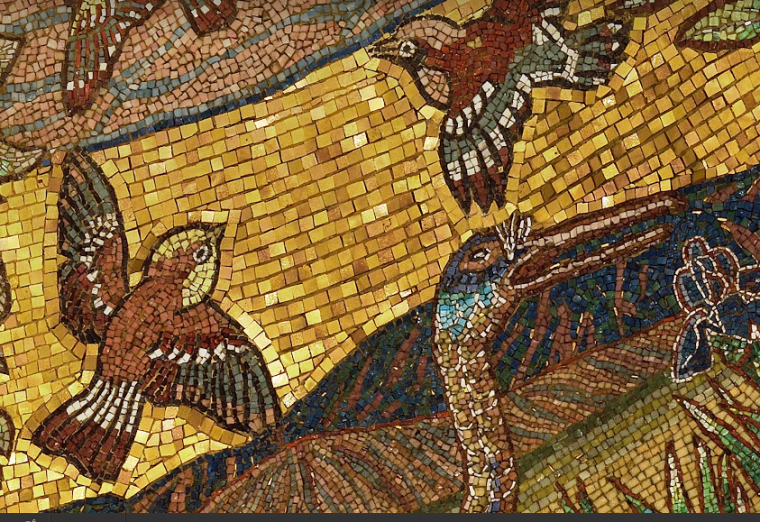St Paul's Cathedral images support Darwin's theory of evolution

The three saucer-domes of the ceiling of the Quire of St Paul's Cathedral have long been known to depict the creation of the beasts as told in Genesis: elephants, lions and other animals amid the palm trees, and fishes and birds near the altar.
Now it has been disclosed by The Times that they also give Christian credence to Charles Darwin's theory of evolution and the "survival of the fittest".
Using the latest digital technology, the mosaic designs by William Blake Richmond are being depicted in new, close detail for online visitors by St Paul's in partnership with Google's Cultural Institute. Even climbing to the Whispering Gallery and the Golden Gallery above, more than 500 steps, does not afford such a detailed view of the mosaics.
St Paul's, designed in the 17th Century by Sir Christopher Wren, harnessed "gigapixel" technology to capture the new images which sparked social media speculation into the species depicted in the mosaic.

Simon Carter, head of the cathedral's collection department said the fish image in the Quire ceiling appeared at first sight to be a "calm mill pond." But when seen close up using the new technology, it was clear the images were "tumultuous" and showed the survival of the fittest in action. "The fish are writhing around, they have massive teeth, and are pretty scary," he said, suggesting this meant they were struggling for survival.
Carter told Christian Today: "The Creation of the Beasts mosaic shows a group of creatures congregated in static harmony whereas the Creation of the Fishes mosaic seems to show a natural world which is more dynamic and potentially violent. This in itself does not support the theory of evolution but it is interesting that at the time the mosaics were being installed, the theory of evolution was being considered by the Anglican church and the idea of intelligent design was emerging, as evidenced in the writing of Canon Liddon. "
Canon Mark Oakley, St Paul's' Chancellor and Chapter member with responsibility for the Cathedral's visual arts, said: "Cathedrals are not always built and decorated in such a way that we get the close-up look. The Street View project does exactly this for St Paul's. This is another attempt to try and make St Paul's less a fortress of faith than a resource for the soul and to do this for everyone, whatever their physical ability, both now and in the future."
At the time the Creation mosaics were being installed, between 1891 and 1904, a key figure was Henry Parry Liddon, a High Church theologian and member of the cathedral chapter.
He wrote: "We cannot forget what our faith teaches us about its origin, its present purpose, and its coming destiny...For our part, as we contemplate the human body, we cannot forget its author. Even if evolution should win for itself a permanent place in our conceptions of the past history of man, it would still leave untouched the great question of man's origin."











